...Army, analysts agree: Israeli aerial superiority shouldn't be in question because one plane got shot down -- but Russia's reaction to this weekend's events is a different matter
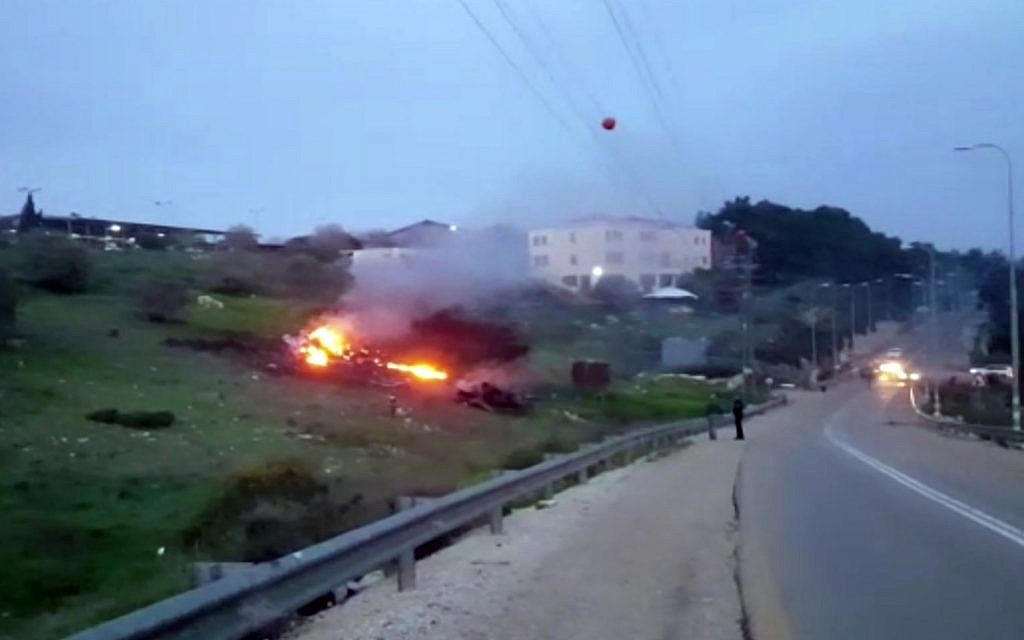
In this image made from video provided by Yehunda Pinto, the wreckage of an Israeli F-16 is seen on fire near Harduf, northern Israel, February 10, 2018. (Yehunda Pinto via AP)
The apparent downing of an Israeli F-16 fighter jet by Syrian air defenses was an enormous public relations win for dictator Bashar Assad and his allies Iran and Hezbollah.
...In Israel, the downed F-16 prompted widespread hand-wringing and discussions about whether or not the Jewish state still maintains air superiority in the region.
...[But] Israel hasn’t had true air superiority in the region since late 2015, when Russia decided to install an S-400 missile defense battery in Syria powerful enough to track the vast majority of Israeli airspace.
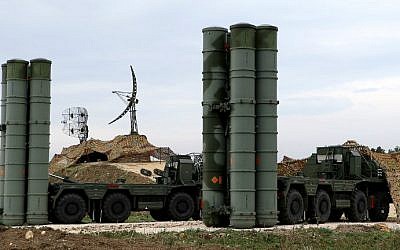
S-400 Triumf missile defense system at the Russian Hmeimin military base in Latakia province, in the northwest of Syria, on December 16, 2015. (Paul Gypteau/AFP)
...“A fly can’t buzz above Syria without Russian consent nowadays,” an Israeli defense official told the International Crisis Group think tank after the S-400 was installed.
...The F-16 was shot down on Saturday morning after it and seven other fighter jets took part in an airstrike on the T-4 military base near Palmyra in central Syria, from which the IDF says an Iranian operator flew an Iranian drone into Israeli territory an hour earlier.
The downing of the F-16 might have ended a false notion of the Israeli Air Force’s invincibility, but it does not have serious negative consequences for Israel’s aerial dominance, experts say.
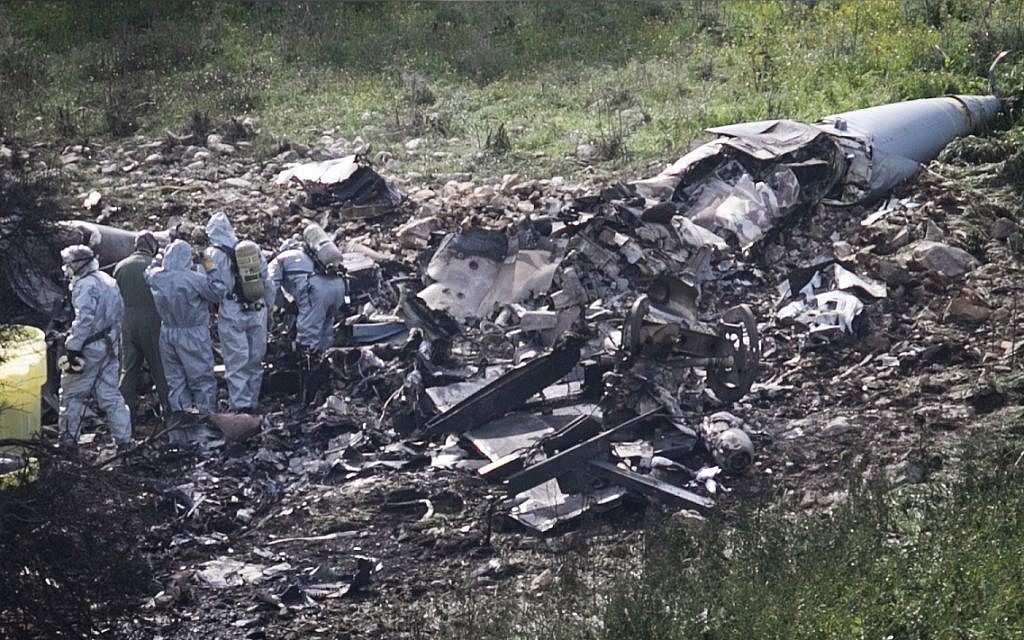
View of the remains of an F-16 plane that crashed near Kibbutz Harduf on February 10, 2018. (Anat Hermony/Flash90)
Far more serious is the potential for Russia to end the policy it has maintained until now of not taking direct action against Israeli planes conducting airstrikes against targets in Syria.
...The Israeli military does not see the downing of the F-16 as the disastrous loss it’s being painted as and still considers itself as having aerial superiority, though it does recognize it as a “significant event,” IDF spokesperson Lt. Col. Jonathan Conricus told The Times of Israel on Monday.
“Yes, a plane was shot down... But let’s keep it in proportion. The important thing is that an hour after this plane fell, we went out and destroyed about half of Syria’s air defenses.”...
How it came down
The initial assessments of the event indicate that the plane was brought down while flying over Israel after a large volley of anti-aircraft missiles — at least five, but possibly more — were fired at it, Conricus said.
The army said it was still investigating if the plane was brought down because it was operating at a high altitude to ensure its bombs were hitting their targets, which made it easier for Syrian air defenses to spot and fire at it, and failed to react quickly enough, as was reported in Israeli media outlets on Sunday.
Conricus said the initial investigation should be completed shortly, after reviewing the evidence and speaking with the flight crew.
On Monday, the Yedioth Ahronoth daily also reported that another fighter jet was also targeted by the Syrian anti-aircraft missiles in the same barrage but managed to escape.
It therefore does not appear to be the result of any kind of new Syria capability or unknown Israeli vulnerability, but some combination of human error, lucky timing and, perhaps, a degree of hubris by the flight team.
Brig. Gen. Amnon Ein Dar, head of the air force’s Training and Doctrine Division:
“There’s no [new] issue that we hadn’t previously identified. We operate in Syria continuously, conducting thousands of missions in Syria in just the last year...There are many levels of protection for a plane during a mission: intelligence, electronic [warfare], the flight team itself. We’re going to go level by level to find out what happened...”Dominance in the air battle
Regardless of the exact cause of the F-16’s destruction, one event is not what determines air superiority, according to Yiftah Shapir, a former air force officer and analyst on quantitative military balance who has written on the concept.
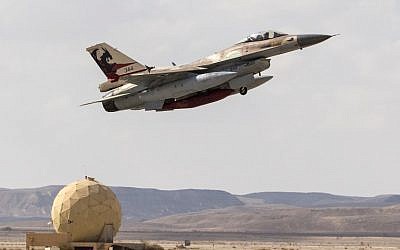
An Israeli Air Force F-16C takes off during the Blue Flag air exercise at the Ovda air force base, north of the Israeli city of Eilat, on November 8, 2017. (Jack Guez/AFP)
Air superiority is defined by NATO as “that degree of dominance in the air battle of one force over another which permits the conduct of operations by the former and its related land, sea and air forces at a given time and place without prohibitive interference by the opposing force.”
As a result, Shapir said on Monday, “You never look at one lone case. You calculate the possibilities. If X air defense can bring down this or that many airplanes, then you can say if it’s prohibitive or not.”
Those equations don’t change because of one airplane, said Shapir, a senior research fellow at Tel Aviv’s Institute for National Security Studies.
Lt. Col. (res.) Reuven Ben-Shalom, a former IAF pilot and current analyst, was even more direct.
“It doesn’t mean anything about our air superiority. You can have superiority and you can win, while still losing people...” ...Ben-Shalom described the downing of an F-16, sinking of a ship or destruction of a tank as simply the cost of waging war, though he said it’s not one the Israeli public is used to paying.
...The issue, according to Ben-Shalom and Shapir, is in part that the Israeli Air Force has been too good in recent years, leading to unrealistic expectations.
“It is nothing short of a wonder that in the operations in Gaza [terrorist groups] haven’t been able to take a fleck of paint off our aircraft,” Shapir said, noting that these groups have shoulder-fired missiles and other weapons that could feasibly hit an Israeli helicopter or low-flying plane.
According to Ben-Shalom, who runs a strategy firm, these victories have made “us used to acting freely and nothing happening.”...
While the downing of the F-16 might not indicate a change in Israeli air dominance, it is not yet fully clear what impact this weekend will have on the air force’s freedom of operation in Syria.
On the one hand, the air force’s destruction of a large percentage of Syria’s air defense would indicate that Israel could operate more freely in the country in the future.
The serious blow to the Syrian anti-aircraft systems, which air force officials say was the most significant of its kind since 1982, was also meant to send a message to Assad of what’s to come if he again fires on Israeli aircraft. If that was internalized by the despot, this too could smooth the way for future Israeli missions in Syria.
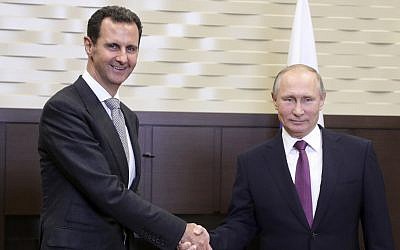
Russian President Vladimir Putin, right, shakes hands with Syrian President Bashar Assad in the Bocharov Ruchei residence in the Black Sea resort of Sochi, Russia, November 20, 2017. (Mikhail Klimentyev, Kremlin via AP)
The Russian complication
But on the other hand, there is rising concern over how Russia — by whose grace Israeli pilots are currently flying — will react to its ally, Assad, getting pummeled by Israel.
Moscow, which has not accepted Israel’s claims, could make its efforts more difficult, risky and complicated, Ben-Shalom said, though he is convinced that Israel could get by even if Russia took a more antagonistic view.
According to Shapir, the problem is not the capabilities of Russia’s S-400 themselves, but that Israel would rather not go to direct war by attempting to disable the system, which it might be more inclined to do if it belonged to another country.
“[Israel’s freedom of movement] isn’t limited because the system is an S-400, but because it is flying the Russian flag...” ...

